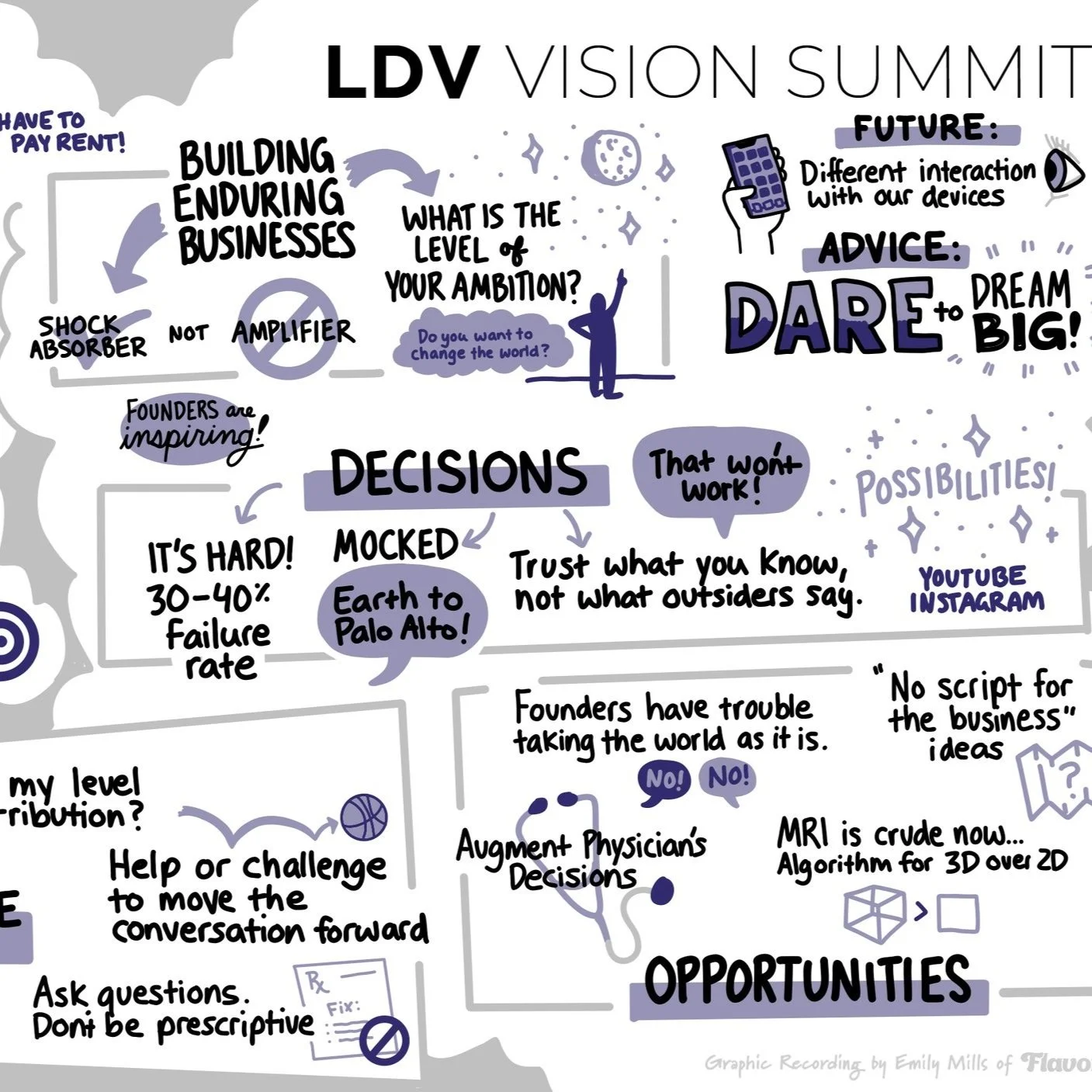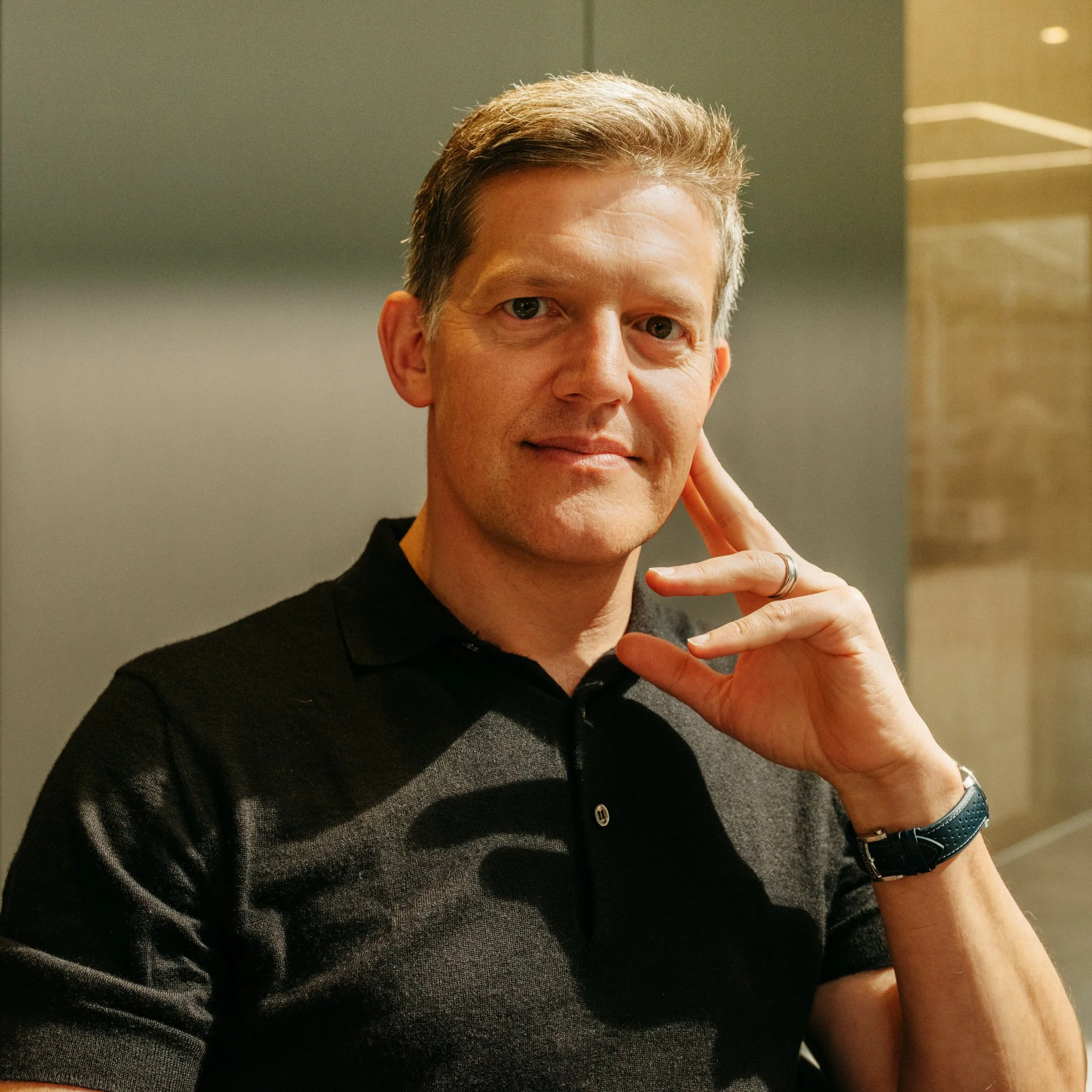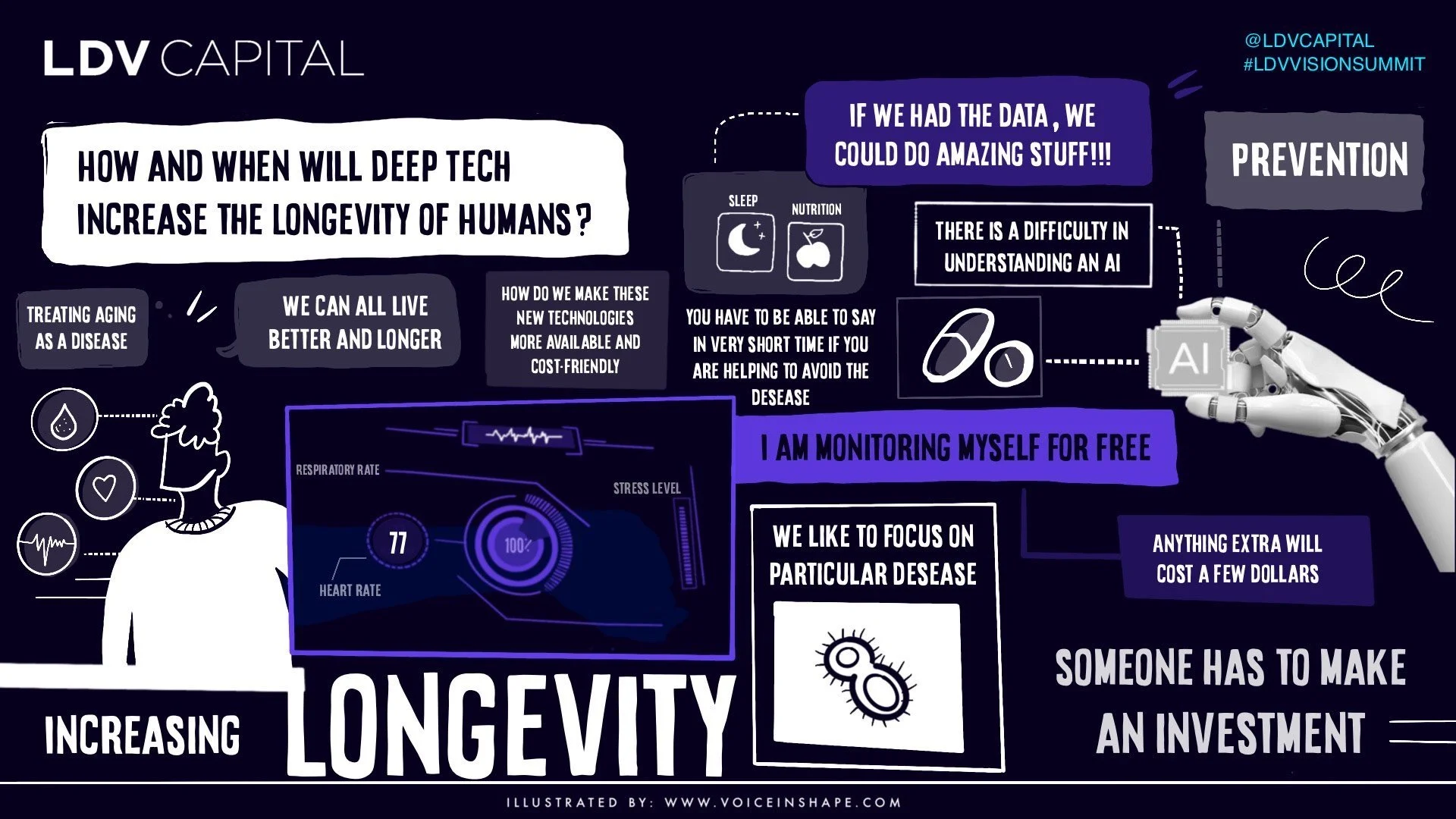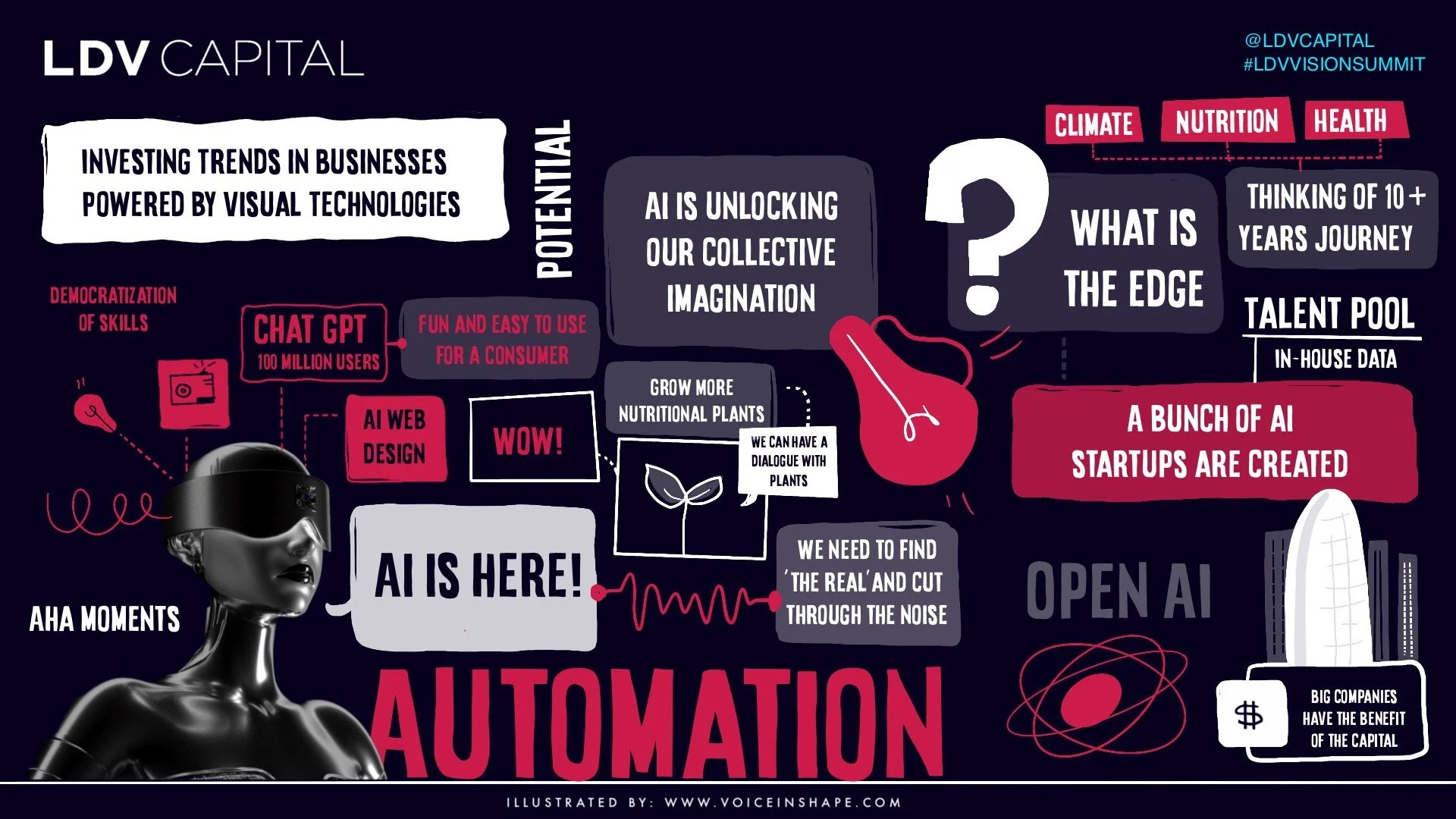Interview with Dr. Sujatha Ramanujan, Managing Director of Luminate – an Accelerator for Startups with Optics, Photonics and Imaging Enabled Technologies
/LDV Capital invests in people building businesses powered by visual technologies. We thrive on collaborating with deep, technical teams leveraging computer vision, machine learning, and artificial intelligence to analyze visual data. We are the only venture capital firm with this thesis.
Our Women Leading Visual Tech series is here to showcase the leading women whose work in visual tech is reshaping business and society.
Sujatha Ramanujan, managing director of Luminate, the acceleration program administered by NextCorps
Dr. Sujatha Ramanujan is a serial entrepreneur and seasoned executive with 25 years of experience in medical devices and consumer electronics.
She has started, built, and grown three startups specialized in cardiac surgical equipment, optical communications, and nanomaterials. In addition, Dr. Ramanujan has held scientific, technical leadership, and laboratory head positions in Chrysler Corporation, GE, Kodak, Carestream, and Intrinsiq Materials.
Sujatha holds a Ph.D. in Electrical Engineering from the University of Michigan and is an Executive Board Member of the National Women’s Hall of Fame. She holds 28 issued US patents.
Dr. Ramanujan currently manages Luminate – an investment fund and business accelerator for startups that have optics, photonics, or imaging-enabled applications. Her team identifies ten promising companies each year from around the world, invests $100,000 in each, and provides six months of comprehensive training and support. These companies then compete for up to $2M in follow-up funding.
LDV Capital’s Abigail Hunter-Syed spoke with Sujatha about managing a crisis, fear of boredom, and a mission to revitalize the Rochester area. The following is the shortened text version of the interview and the unedited video can be found below. (Note: After five years with LDV Capital, Abby decided to leave LDV to take a corporate role with fewer responsibilities that will allow her to have more time to focus on her young kids during these crazy times.)
Abby: It's such a pleasure to have you on Women Leading Visual Tech. We've known each other for a while, you were a judge at our Vision Summit a couple of years ago.
Sujatha: I'm happy to be part of this, and I'm excited to see all of the progress that both LDV and Vision Summit are making.
Abby: Thanks so much! Let's start from the beginning. How do you describe what you do?
Sujatha: At Luminate, we identify companies from all over the world that have promising optics, photonics, and imaging enabled applications. We bring them into the accelerator, we invest in them, and provide them with comprehensive support, including getting them ready for further funding to help them quickly move emerging innovations into the market.
Abby: Tell me a little bit about your path? You've now become an investor in all of these optics companies, but you started as an electrical engineer. You're focused on optics, right? Was there one particular crossroad that you came to that drove you towards optics and nanomaterials?
Sujatha: I finished my bachelor's degree, but I didn't go straight into optics. My first passion was always mathematics, and optics is a way of mathematics. I got a job with GE right after finishing my undergraduate degree. It was a rotational program and it had a heavy mathematical focus. About a year and a half into it, I realized I wanted to go to graduate school because the type of work I wanted to do was far more in-depth in science and not basic engineering.
I left GE and I went through the graduate program. I worked in a nonlinear dynamics type optics area, which meant that it was heavily mathematical. We built and measured the devices that we modeled. I came at everything theoretically, mathematically, and then went to a practical implementation of it, which I just loved doing.
I eventually took a job in the optics research lab at Kodak. This was before Kodak began experiencing problems. We worked on all kinds of innovation, from initial AR/VR and immersive technologies to digital cinema, digital printing, and image processing. You name it, we were doing it. Some of these inventions made it out into the public’s hands. When we first started working on digital cinema, there was still film. We got thrown out of a lot of offices when presenting this crazy idea for digital cinema.
Abby: Everybody is like, "No way that's not going to happen."
Sujatha: We were insisting: "It's going to happen. You can choose to be the leader or be run over." Well, they chose the latter. However, we did implement digital cinema in the big Kodak theater in Hollywood.
As things started to get a little difficult for the main lines of Kodak, I joined their strategic investment group as a technical person to help vet technically potential investments and acquisitions. That's how I got to learn a lot of the skills that an investor has to have.
Although Kodak didn’t always act on my recommendations, I realized that I had a good eye. For example, two of the companies that I felt strongly about that they passed on sold later for $250 million and $130 million. After the third company I had suggested was turned down, I asked why. They gave me a very business-like clear reason why it was a bad investment: “it was a technically outstanding technology but from an investment point of view, it was a bad idea.” That company’s innovation was a liquid crystal on silicon. In 1990, it was new, and most of my work at that point was in spatial light modulators. I also was seeing that SLM technologies were becoming “the thing” and we needed to invest in this space. The strategic arm explained to me why it made sense for us financially to put money into that company as opposed to buying their product. I understood and then started working with them. I made some good investments, but eventually, that part of Kodak also began to struggle.
At that point, I had to take a hard look at where my career was going. I took a great opportunity to move into the health imaging group and got involved in mammography. Some of my research work back when I was in grad school was mammo-related, so this was a natural step. I ended up becoming the CTO of a group that did computer detection for mammography and other types of cancers.
Breast cancer is still a visual attack. You're grabbing image data from various modalities and then analyzing them. This mammo-related piece was something I was very passionate about. Breast cancer runs in my family. We had it, but we survived because science made it survivable. I was motivated to do something in the field. I had to look at “can science make it obsolete?” as the next question. It was a fascinating area of work for me. Then I took maternity leave to have my second child. When I came back, I found out that I was now running this business.
Abby: "Hey, welcome back. Hope you enjoyed your rest. And now you are The Product Line Manager!"
Sujatha: We also started doing pediatric imaging and various other types. I loved what I was doing: it was growing and changing for a number of years. It was no longer Kodak -- it was Carestream Health. Then a couple of things happened. First I was presented with another good opportunity. This made me realize that, while I did love my job, I didn’t like working in a large company. I was itching for that small startup-feel. The decision to leave was one of the toughest I’ve had to make.
Sujatha with her kids. She has been an Indian dance instructor for decades.
But an economic development agency called saying that there was a company trying to locate a business in the United States and they needed a senior management team that could implement it. They said, "You have the materials-background and you have been with small businesses before and you've got all the connections. Would you consider doing this?" So, I stepped in.
Abby: What was it about this opportunity that made it like, "I can't pass this up!"?
Sujatha: There were a lot of things that came into place simultaneously, and one of them was just my nature. I need to be at the cutting edge of innovation and be able to watch something grow and emerge. It's in my DNA, and I like the thrill.
Everybody has their worst fear, and mine is boredom. If you ask me, what am I afraid of, I'm afraid I'll be bored. I'm afraid that I will get up and see 20 years have passed and nothing will have changed. For me, that was a motivating thing.
I live in Rochester, NY and we've had a lot of economic struggles here. A lot of people have lost their jobs. There's been a lot of economic uncertainty. I believe the biggest path to employment and manufacturing jobs is in innovation. The best way to grow employment and to grow the economy is to create things that people need and make businesses out of them. I felt that if I helped them bring this company here and create jobs in the area, that people who had lost their jobs could be employed, that we could be doing something positive.
It was time for me to try a smaller company again. The business was stable and our products were back-ordered. People think that's a great place to be, but you don't want to be back-ordered. You want to have your projections correct.
Abby: You took this opportunity to not only join a startup that was innovating and doing something exciting, but also the wider social and economic implications for your community were a big role to play.
Sujatha: It was a big deal because I watched a lot of my colleagues lose their jobs. At that time, my husband was still employed by Kodak but you could see the writing on the wall. I got tired of the narrative, "Oh, Kodak's going downhill and Rochester, blah, blah." You own your narrative.
There are 150 optics companies in this region. There's a lot of innovation in going on here. Everything has a life to it.
Abby: 100%. I went to the University of Rochester for my undergrad and I have a bunch of family members who still live in the Rochester area. That was one of the feelings I had when I was going to college there: Kodak’s downsizing was having an immense impact.
Sujatha: It felt like I was talking to Eeyore every time I went out there. I’d hear, "It's probably going to die" and I’d respond, "Well, that's your choice."
Dr. Sujatha Ramanujan interviewed Dr. Milton Chang, Managing Partner of Incubic Management, author of “Toward Entrepreneurship”, and Luminate Board Member in NextCorps’s podcast “Forward Faster”.
Abby: Now there's new energy, a revitalization to it that came in part from companies like the one that you joined. What you're trying to do with Luminate is to leverage all of these optical experts that already reside in the area, who are starting to do new things, and try to create new companies that can then be headquartered in Rochester.
Sujatha: Exactly. We live in a time where we can innovate and work with multiple companies. It's a lot easier to collaborate now. Everything doesn't have to be under one roof anymore, it makes it a lot easier to grow.
With the economic downturn and everything that was happening, I knew I could either be part of the problem or part of the solution. I made a difficult decision to step away from that mammo-related business and move on. I took this job. It was two of us: I was the COO, and there was a CEO. We were working out of our various living rooms and growing this business and a lot of it was in England.
Abby: What did you build? What were you most successful at?
Sujatha: Of the three startups I was involved in, this one eventually did not succeed. But we did do well.
Abby: There are so many lessons learned from journeys like that. Every single venture that you do, isn't going to be successful, but the lessons that you learned can be even more valuable as you go forth from there.
Sujatha has served on the board of the National Women’s Hall of Fame for 9 years and hosted 3 inductions.
Sujatha: There was so much I learned from this company that I take with me every single day. I learned the value of my team. I had the great fortune of being able to build my team. I am proud that the business was a high-tech material science company with women in 50 percent of the senior positions.
We were making printable metals for print circuit boards and all kinds of fascinating applications. We had some A-list clients.
Then I became ill and I had to go home. By the time I came back, a lot of things had changed. They eventually chose another CEO. I learned that I will not work in an environment unless I respect the people I work with within the team; that no innovation, no profit, nothing is worth an environment that doesn't treat people well. When I was younger, I used to think I can work with anybody. You can, but I don't want to, and I don't have to.
Abby: If you're in a lucky enough position where you don't necessarily have to do it to keep food on the table for your family, then making sure that there's respect as the bottom line is a huge thing. Coming off of a health-related incident where you need to take time off to improve your wellbeing, that could only be a beneficial thing for the company that you're working for and working with. People who don't respect that can be a detriment.
Sujatha: That's part of it. I also learned that everybody has things that are important to them. When you have a team, you need to have a diversity of opinions but you also need to have a common purpose.
I want to hear different ideas. I don't want 10 clones of me sitting around because that's just frightening. I want people with different personalities and different thoughts and different ways of thinking, but you need to be pointed in the same direction and you need to operate from the basic idea of what is right and what is wrong. If you have a different set of what is right and what is wrong, or you're going in different directions, then you will create a dysfunctional team.
Abby: It must be exciting to have the opportunity to invest in the next-generation optics companies and provide them with these kinds of insights at Luminate. Are there any trends in technologies or solutions that you're currently witnessing that you're most excited about?
Sujatha: There's a huge amount of work being done in the AR/VR space. A lot of that's being led by Oculus/Facebook and Magic Leap. As a result, it's a tough place to navigate because large companies are secretive about what they're doing. You may think you're innovating but you might be reinventing something they already have. Unless you have something that's truly different and people are grabbing at it, then it's something…
It’s interesting how visual and optical technologies are being currently used in the pharmaceutical industry and biotech. The question that we need to ask ourselves is: “what are the unanswered questions in biotech?”
Abby: Give me an example of one of the questions that you've seen people starting to scratch at the surface of solving for?
Mango teQ went through the Luminate accelerator program in 2019. They developed Reyedr – the system that helps motorcyclists keep their eyes on the road using holographic technology to display information at the infinite focus. © Mango teQ
Sujatha: I was working with a small company that was doing an assay readout system a while ago. Everybody was focused on the chemistry of the assay and how you are going to read it out. Signals and noise on the readout were the problems. To me, that's an optical science question. I said, "Rather than beating up the chemistry all day long, let's look at the optical system and see what we can do to make that better."
We need to have better communication between that pharmaceutical research, pharmaceutical development, and our optical developers. I know that they have optics groups in their pharmaceutical research companies but we need to build stronger collaborations so that we understand what the real shortcomings are because, otherwise, we're making things we think people need.
Abby: At LDV, we classify these as visual technologies because of the fluorescent dyes and the fluorescence imaging that's taking place to understand the assays, for instance, or the genetic sequence. Is that how you see it too? I'd love to hear your perspective on it. Are these optical processes around reading out the dyes the most critical aspect for these companies at the moment?
Sujatha: It is a critical aspect but is it the most critical one? I'm wondering if the real question hasn't been asked. Right on the surface, that does look like one of the big issues. How do you visualize that? Is it a chemistry problem? Is it an optical processing problem? That's a huge area that we need to take a look at.
One of our companies was creating a truly random number generator. When you talk about random numbers, they're not random, they're all seated algorithms, but optics and photonics are inherently seated randomly. It's Heisenberg's uncertainty principle. If you start that with this principle, you could revolutionize how security and quantum encryption are explored. It's a long-term problem but financial institutions and everyone needs it.
Abby: As we get closer and closer to the quantum computing problem being solved, the quantum security problem is an even bigger one, right?
Sujatha: Exactly. We're at the cusp of something amazing there. I get excited when I see these types of innovations.
For a small business, it’s challenging to go after something like this because you go to an investor and they ask you, "How do I cash out in five years?". You try to explain to them, "This might be 10." Then you hear, "come back in five and we'll talk."
Exploring the ultimate limits to temporal, spatial, and optical resolution is among the biggest scientific challenges and questions in quantum optics and optical physics. © University of Rochester illustration / Mohammad Mirhosseini
Abby: You believe this is an exciting time to be in optics and photonics… What makes you think that now is the time for major breakthroughs?
Sujatha: A number of incredible innovations came out of optics and physics since the 1990s, particularly in quantum theory and quantum optics.
Abby: Earlier in this series, we had Dr. Michal Lipson. She's a MacArthur Fellow at Columbia. One of the things that she talked about is how excited she is about the potential of photonic chips to optimize these gigantic data centers because of the explosion of AI. Being able to increase our processing power with much less space on better chips, or to speed up our algorithms and everything else has been a big thing that she believes in, that we believe in too. It sounds like that is something that is at the top of your mind as well.
Sujatha: It is. Her work, in particular, is absolutely groundbreaking and fascinating for that reason, that suddenly you can ask questions you couldn't ask before.
Every invention is limited by the question you ask. Your invention starts with a question.
Everything on a chip makes everything faster. It means analysis is faster, it means data is more deeply driven. I looked at the progress of mammography when I started working in this space. You couldn't get the right quality of image data at that time. Everybody was trying hard to take images without over X-raying women. The question is: can I do it holographically? We can get good image data now. The next question is about analyzing this data. If you rely on physicians, things get missed. Can we come up with mathematical algorithms that indicate, "I see what’s wrong in this image"?
Abby: Algorithms that are able to see it faster.
Sujatha: And more accurately. Things that are wrong, are not something that's obvious. When you’re looking for cancer, you're looking for all kinds of things. It could be a mass, a microcalcification, a lot of vascularization where it shouldn't be, it could be an asymmetry...
Now it's done by deep learning algorithms, and those algorithms are enabled by the speed of processing and these giant data centers. You can get a much more accurate result with a much more complex question. You can see the evolution happening.
Abby: An exciting time to be in this space indeed. If you had to give advice to those who have an idea, or they've identified a problem, but they haven't built a business out of it yet, or even started to, what would your advice be?
Sujatha: The first thing you have to do with your idea is to make sure that it's necessary. Go out and talk to everybody. I don't mean talk to people who like you and who are your friends, because your friends will not tell you, "That's stupid."
You need to go out to everybody and keep asking, and throughout the business process, no matter what stage your business is in, talk to every potential client, find out what they need, find out what's hurting them, show them your ideas. Be that person who's gregarious and out there, because you need to make what people need. A lot of times I'll hear, "Well, they don't know what I can do. They don't know they can do this." My response is: "Okay, so show them what you can do, and then ask the question again."
Abby: Maybe it's not just what people need, but that they would also pay for...
All right, my last question: if computers didn't exist, what career choice would you have chosen?
At 20, I wanted to live in a houseboat in Panama. At 30, I was teaching the women's climbing class. If you asked me at 40, I would have probably preferred something more in the educational domain where I could help other women. I kept changing my mind about what I want to be but I’ve always loved mathematics and optics.
Abby: Thank you so much for taking the time to talk about Luminate and everything that you're developing there, about your career and how you transitioned from electrical engineering and optics into the entrepreneur side of things and into the investor side of things. It's been amazing to hear your perspective on these things. We are excited to be investing in this visual tech and optics at such a pinnacle point in time.
Sujatha: I'm happy to see what LDV does because you are also backing women and minorities.
Abby: It's that diversity of opinions and perspectives, as you talked about earlier – it's critical to everything that we do, including building high-value portfolios.
A video version of this interview is available below:

















